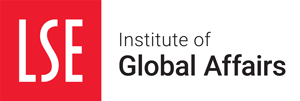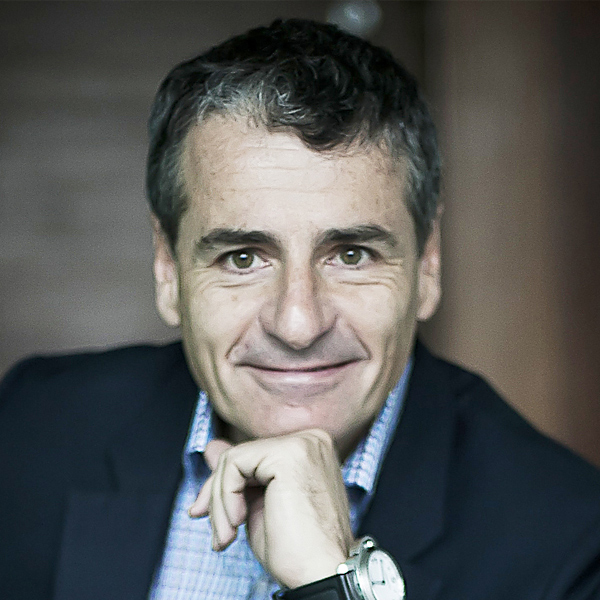LSE


“Today it is a sin to run a current-account deficit, and that is crazy,” lamented Singapore Deputy Prime Minister Tharman Shanmugaratman at the annual gathering of the International Monetary Fund and the World Bank in Bali in October 2018. Ministers who boasted of their balanced current accounts, while officials from deficit countries were treated like reprobates. Yet, as Tharman reminded the crowd, countries like South Korea and Singapore “grew by running current-account deficits at early stages of development, so we could invest ahead for growth while our savings were being built up.”
Economic theory is squarely on his side. A family need not wait until it has savings equal to the value of a house before buying one. Instead, it makes sense to borrow while the parents are young and their income is still relatively low, and to repay once they are better off. The same logic applies to a developing country, which in order to escape poverty should run a deficit and borrow while still poor.
In a poor country, capital – factories, infrastructure, or schools – is scarce, so the rate of return on new investment is high. It is precisely the gap between the profitability of its investment and the interest rate it pays on loans that allows a poor country to prosper. That was the strategy that allowed Singapore, South Korea, and other successful economies to grow rich.
And yet deficit countries are treated like sinners, because running a deficit makes a country dependent on notoriously fickle foreign capital. Borrowing from abroad can boost a country’s growth, but also leave it vulnerable to crises.
All is well as long as foreign lenders keep lending and the country keeps investing. But if lenders get cold feet, the resulting “sudden stop” in capital flows requires the country to cut back on key imports overnight, triggering a recession.
Frightened lenders may then not only refuse to extend now loans, but also demand repayment of old ones. Local firms and banks then have to liquidate investments, but if there are many sellers and few buyers, asset prices can only go south, triggering bankruptcies and a full-fledged financial crisis. The pessimistic expectations of lenders are then vindicated.
That is exactly what happened to countless emerging economies over the last quarter-century. It is also what happened to Argentina in 2018: after a sudden stop in capital flows, the local currency lost half of its value and the economy lurched into recession (mercifully, a full financial crisis did not follow). No wonder current-account deficits are viewed as sinful.
Understanding such risks, emerging countries often do one of two things. They run monetary and fiscal policies that are so tight that current-account deficits are impossible, or they hold large stocks of international reserves. The first strategy is equivalent to having a family forego all loans when buying its own home. The second strategy amounts to borrowing only as much as one has already saved. Neither makes much sense from the perspective of efficiency.
Re-enter Tharman, who chaired a group appointed by G20 governments to propose international financial reforms (I was also a member). In a report submitted to the finance ministers and central bank governors gathered in Bali, the group argues that it should possible for countries to benefit from international capital flows without risking excessive market volatility and crises. But that requires deep changes in the local and global policy frameworks.
The report begins by recognizing that emerging economies should deepen their domestic financial markets. Some financing for investment must come from local sources, just as the down payment on a home must come from a prudent family’s saving. Local loans also tend to be in domestic currency, so borrowers are shielded from exchange-rate risk.
The report also proposes an enhanced global surveillance mechanism. The fact that some financial crises are triggered by self-fulfilling pessimism should not obscure the reality that others are caused by inadequate policies. If those mistakes are identified and corrected before it is too late, the world has a better chance of avoiding the next round of meltdowns. And because financial crises have large and costly spillovers, better surveillance means that innocent bystanders will also be safer.
Most crucially, the report calls for an enhanced global financial safety net to ensure that countries are well protected against excessive capital-flow volatility and self-fulfilling financial market panics.
The global financial safety net has grown since the financial crisis of a decade ago. In 2006, the report shows, 90% of available resources came from the IMF. By 2016, the Fund accounted for only one-third of those resources, with regional financial arrangements and bilateral swap agreements accounting for the rest.

But regional arrangements are not found everywhere, while only a limited number of central banks has access to swap agreements. Moreover, these new financing mechanisms “have not been crisis-tested,” according to the report, they “are subject to conditions in providing countries,” and “do not cover several systemically significant” economies. Last but not least, “the system as a whole lacks the necessary coordination.”
To ensure that countries have timely access to temporary support during liquidity crunches, the various layers of global financial safety net need to be stitched together, and a new IMF standing liquidity facility should be at the core of the enhanced global safety net. And to guarantee that the facility is large enough to deal with global liquidity events such as that of 2008 2009, the IMF will need access to more resources, whether via market borrowing by the Fund or other means.
Skeptics will point out that previous attempts at building standing liquidity facilities at the IMF have failed, because accessing them was either too cumbersome or stigmatizing. But that is no argument for failing to try again –especially in view of the mounting evidence that liquidity crunches can easily morph into solvency problems that quickly spill over national and regional boundaries. The resulting losses of employment and output cause much human suffering that could be avoided if only we had the right policies in place.
To deal with standard moral hazard objections, the new facility would require that countries pre-qualify by demonstrating sound domestic policies. And pre qualification for IMF support would also imply access to the relevant regional financial arrangement, if any, thus helping integrate the overall system.
At the Bali meeting last October, the World Bank unveiled its new Human Capital Index. Singapore and South Korea were at the very top. While emerging economies should aim to emulate these two countries’ educational and health achievements, they should also try to emulate the way Singapore and South Korea paid for all those schools and hospitals: by borrowing abroad and running external deficits whenever necessary. But that will be impossible without bold new global policies that tame harmful capital-flow volatility. The report shows how; now we need the political will to make change possible.
Andrés Velasco is the Dean of the School of Public Policy at the London School of Economics and Political Science.
In 2017-18 he was a member of the G20 Eminent Persons Group. During 2015-16 he co-chaired the Global Panel on the Future of the Multilateral Lending Institutions. In 2013-16 he was a member of the Global Oceans Commission.
Mr. Velasco was a presidential candidate in Chile in 2013. He also was the Minister of Finance of Chile between March 2006 and March 2010. During his tenure he was recognized as Latin American Finance Minister of the Year by several international publications. His work to save Chile´s copper windfall and create a rainy-day fund was highlighted in the Financial Times, the Economist, the Wall Street Journal and Bloomberg, among many others.